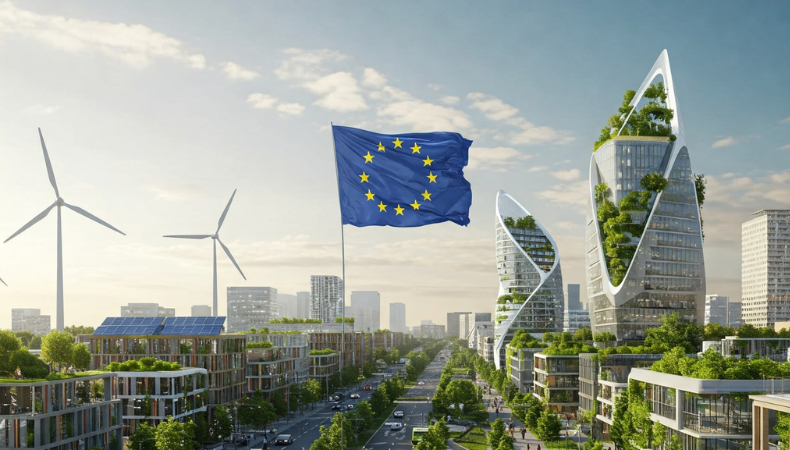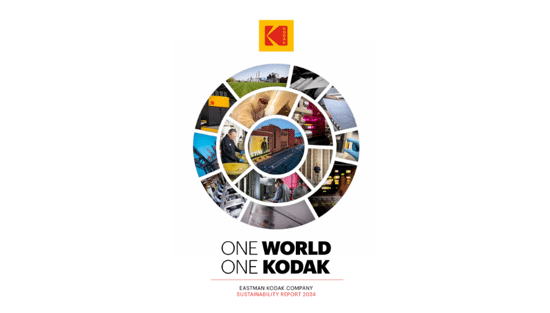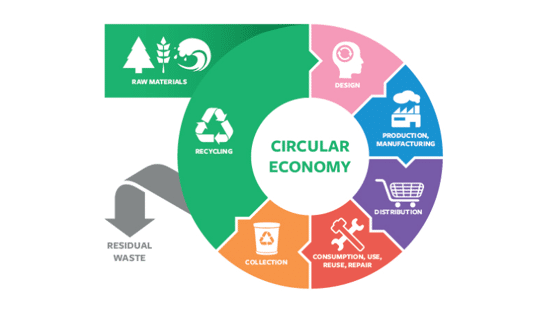The European Union is driving massive sustainability change
.png?width=750)
The EU's ambitious Green Deal, aiming for climate neutrality by 2050, drives significant sustainability changes. Businesses worldwide, especially printers, must adapt to complex EU legislation. Compliance creates challenges but also new opportunities in areas like packaging and signage.
Printers around the world should be paying attention to recent developments in the European Union (EU). This supranational partnership of 27 member states does business in 24 official languages across most of a continent and beyond. Besides the 449 million citizens the EU supports, EU companies do businesses with people all over the world. Trading rules are complex as is the sustainability legislation that recently got a little tighter. Both affect printing companies everywhere.
Doing business with companies in the EU requires partners to understand how the latest EU legislation affects their businesses and their customers’ businesses. Commercial engagement may require compliance with a bewildering array of rules, especially for sustainability. If you operate in a supply chain that involves the EU, it’s a good idea to get up to speed with what is going on.
It all started in March 2020. That was when the EU set up a transnational Circular Economy Action Plan (CEAP). The CEAP is basically a series of sustainability objectives that, taken as a whole, are the building blocks for the European Green Deal. The European Green Deal is an ambitious commitment that involves substantial guidance and funding to achieve zero net greenhouse gas emissions in the EU by 2050. The European Green Deal is intended to help Europe become the first climate-neutral continent. It strives to decouple economic growth from resource use, with no person or place left behind. Ambitious doesn’t begin to describe it.
The European Union’s transition to a circular economy, which is already underway, is based on a complex network of statutes. One way or another these laws will impact on your business, either because you have to comply with them or because your customers will. Legal compliance across boundaries is a necessary part of doing business with the EU and within it. Printing companies operate across all industries so keeping up with what the EU is doing will be seem like a bit of a pain. Legal compliance is tedious and complicated and it requires careful evaluation of your customer base and your own business practises. There will also be lots of admin to tie you down and bore you to pieces. However, the upside is that the mass of legislation the EU is churning out will create new opportunities, especially if you are in the sign and display business or packaging. Commercial printers can expect lots of work too, producing compliance guidance not least for sustainability in the business inhouse, as well as health and safety. It’s not all dull however because whatever it is that drives it, change is about opportunity.
Recent news

Kodak's 2024 Sustainability Report: A Commitment to a Greener Future
Kodak's 2024 Sustainability Report, "One World, One Kodak," demonstrates a strong commitment to environmental and social responsibility. The report highlights impressive reductions in greenhouse gas emissions (56%) and water withdrawal (31%) and aims for zero waste by 2025. Notably, Kodak is pioneering double materiality assessment in the printing industry, aligning sustainability with financial reporting, and showcasing its products' environmental benefits.

How can printers lower costs on energy usage?
Clare Taylor outlines simple steps for businesses to achieve energy sustainability, focusing on cost savings and staff comfort. It emphasises starting with measuring energy consumption to identify key areas for improvement. Subsequent steps involve managing energy use through behavioral changes and low-cost interventions, like optimizing cooling settings and ensuring equipment is switched off when not needed.

The European Union's circular economy plan
Printing companies must understand the EU's Circular Economy Action Plan (CEAP), part of the European Green Deal. These initiatives drive sustainability, impacting businesses globally, even if not EU-based, through customer requirements. Printers need to be aware of reporting and sustainability expectations to manage risks and retain clients.

A revised look at sustainability in wide format print
Sustainability is crucial for wide-format print, moving beyond marketing to an imperative driven by brands and regulations. Common "eco" claims often mask complexities; true sustainability demands carbon reduction as a core principle. Life Cycle Assessment (LCA) offers data-driven insights for genuine environmental improvement, as demonstrated by UFABRIK's transparent approach.